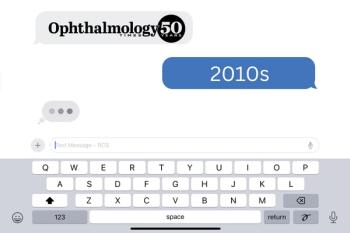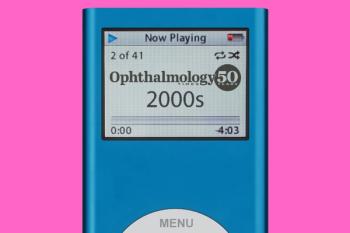
- Vol. 44 No. 17
- Volume 44
- Issue 17
The future: Development of true accommodative IOLs
This article was reviewed by Florence Cabot, MD
Like space in the “Star Trek” motion picture series, presbyopia remains one of the final frontiers of
Over the years, the results of accommodative pseudophakic IOLs have been mixed, but that may be ready to change and the last frontier of ophthalmology may be tamed with new lenses that provide options for surgeons and hope for their patients.
Accommodation and presbyopia involve several ocular structures-the ciliary muscle, pupil, lens, zonule, vitreous, and some brain structures and neural pathways as well. This makes restoring accommodation complex. Restoring accommodation means creating a device that has a continuously variable, adjustable, active, near-focusing ability. This can be thought of as
similar to the autofocus of a camera. Over the years, several teams have worked on restoring accommodation, whether on the cornea, the lens, or on the sclera.
Related:
The first generation of accommodative IOLs relied on the Helmholtz theory of accommodation. The lenses are supposed to provide a forward shift, because they have flexible haptics that should respond to the contraction of the ciliary muscle. Results have been disappointing, and the few good results that have been seen were attributed to an increase of optical aberrations rather than an actual movement of the lens.
The Ophthalmic Biophysics Center (OBC) at the Bascom Palmer Eye Institute in Miami, FL, built a unique dual OCT system that provides dynamic imaging, so real-time video of the ciliary muscle can be seen on one side, with the anterior segment seen on the other side.
Researchers used that system to image patients that had received a Crystalens (Bausch + Lomb), a first-generation accommodative lens. They could see that after a 2-D accommodation stimulus the Crystalens was actually showing either a minimal forward axial shift (not able to provide useful accommodation to the patient), or no axial shift at all, or a backward axial shift in some cases.
Related: Examining comparable surgical methods for IOL dislocation Modular and multicomponent IOLs
The new-generation accommodative IOLs are modular and multicomponent, and provide postoperative adjustability. In both categories, the exact effective lens position is known. This allows precise IOL calculations and refractive outcomes.
Multicomponent open capsule IOLs
Some lenses do not have continuous adjustability, but allow for an adjustment to be made after the operation, and repeated over time. Within this category there are two subcategories. The first consists of two parts, a base component and an optic component.
The Gemini Capsule from Omega Ophthalmics, the Harmoni from ClarVista Medical, and the Precisight from infiniteVision Optics are this type of lens. These keep the capsule open, thus preventing posterior capsular opacification. The haptics stay in the bag while the optics can be exchanged and adjusted as many times as necessary later on.
Related: Precise alignment helps surgeons focus on best toric IOL post-op results Modular IOLs
The other subcategory is a single component lens, with the adjustability achieved through a reshaping of the IOL itself, which is done with UV light or a femtosecond laser. This category includes the Light Adjustable Lens (LAL) from RxSight (adjustment done with UV light a few weeks after surgery), and the femtosecond laser-adjustable system from Perfect Lens, which can be used to reshape any acrylic
Accommodative IOLs with instantaneous, constant adjustability
These lenses rely on ciliary muscle movements or pupillary changes to provide a real time change in their shape to provide near vision. There are two subcategories here, IOLs that are injected into the bag, and IOLs that are implanted in the sulcus or fixated to the sclera. The main reason for implanting outside of the bag is to avoid capsular bag fibrosis.
Related: Surgeon finds new monofocal IOL lens lands in a visual 'sweet spot' In-the-bag IOLs
The Synchrony lens from Visiogen, the WIOL-CF from Medicem, and one of the newest, the Juvene by LensGen, are in this group. Another interesting concept, just at the experimental level with Sapphire’s Elenza, is injecting a chip into the capsular bag, which has a sensor. A change in pupil size can trigger an automatic adjustment exactly like auto focus, and there can also be a remote control used to change the accommodation. Looking further, this could be integrated with artificial intelligence to become even more useful.
Out-of-the-bag IOLs
The NuLens Dynacurve uses the collapsed bag – zonular complex as a diaphragm, which drives a piston system that changes the shape of the lens, and the AkkoLens Lumina is injected into the sulcus and has two optics that slide perpendicular to the visual axis in response to the ciliary muscle for near focus.
Accommodating fluids/lens refilling technology
This technology is utilized by the Nishi Lens Refilling IOL, the Phaco-Ersatz from Ophthalmic Biophysics Center at the Bascom Palmer Eye Institute, the Smart IOL by Medennium, and the Liquilens by Vision Solutions. Despite years of development, it is still difficult to get good results with this type of technology.
Read more by Steve Lenier
Florence Cabot, MD
P: 305-326-6111
Dr. Cabot has no relevant financial intersets to disclose.
Articles in this issue
almost 6 years ago
The ABCs of VEGF treatment for diabetic macular edemaabout 6 years ago
Dealing with positive and negative dysphotopsiasNewsletter
Don’t miss out—get Ophthalmology Times updates on the latest clinical advancements and expert interviews, straight to your inbox.



















































.png)


